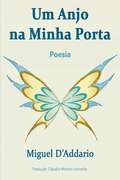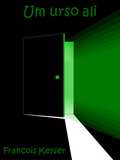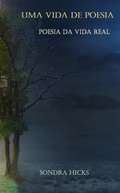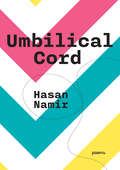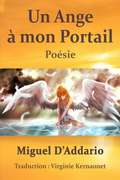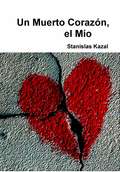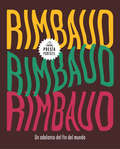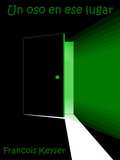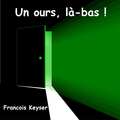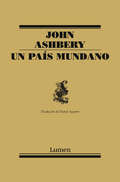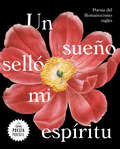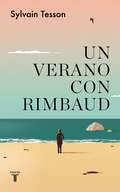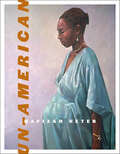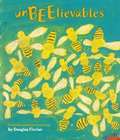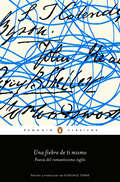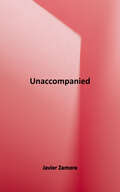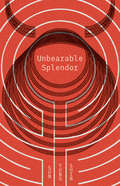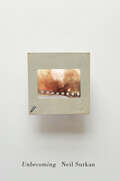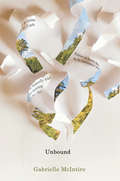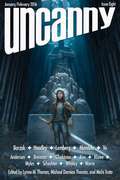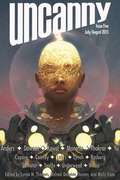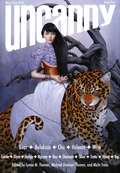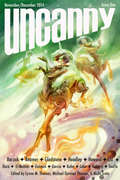- Table View
- List View
Um Anjo na Minha Porta
by Miguel D'AddarioEste livro de poesia nasce a partir de um caso estranho, porque surge logo depois de contatar uma seguidora das redes sociais, e sem sequer me conhecer me conta uma história pessoal e profunda. Um relato secreto e doloroso, uma história de morte a amor. Eu interpretei este encontro como se fosse um anjo que veio me contar algo, me dizer verdades e me deixar uma mensagem final. Simplesmente cheguei a uma conclusão e lhe disse: - É através da dor por onde entra a luz ou a escuridão; Ela me respondeu rapidamente algo e nunca mais soube dela. E foi por isso que decidi chamar este livro de: “Um anjo no meu portal” Um livro que só planta posições frente a situações da vida. Filosóficas, existenciais e inclusive de busca interior; mas com reflexões no final.
Um urso ali
by François KeyserRick encontra um urso em sua casa depois de escurecer e fica aterrorizado. Seus pais não conseguem encontrar o urso e pensam que ele está tendo pesadelos. Mas o urso é real. A questão é, porém, o urso é amigo ou inimigo? “Um urso ali” é a história que as crianças vivem todas as noites. É sobre o medo das crianças do escuro e monstros no escuro. Propõe-se mostrar às crianças que elas não têm nada a temer e que os brinquedos que às vezes acham que se tornam assustadores depois de escurecer, não são realmente assustadoras. Todos podemos nos relacionar com nossos medos infantis da escuridão como filhos ou pais. Esta história lê bem ensinando as crianças a não ter medo do escuro.
Uma vida de poesia
by Sondra Hicks Luciana DuarteEscrevo com meu coração sobre coisas na minha vida que me inspiram. Então, eu quero me expressar de muitas maneiras para os outros, mas eu sempre temi estar emocionalmente fechado. Como uma jovem mulher, eu era conhecida por escrever mais do que falar. Muitos dos meus poemas foram perdidos ou destruídos ao longo da minha vida. Então eu coloquei o melhor do que eu ainda tinha na minha coleção. Espero compartilhar meus altos e baixos ea perspectiva única que estou dando algo para os outros se relacionarem.
Umbilical Cord
by Hasan NamirDear Child, Once upon a time, Your dads wanted to have a baby. It was a life-long dream of ours. We were always hopeful.Lambda Literary and Stonewall Book Award-winner Hasan Namir shares a joyful collection about parenting, fatherhood and hope. These warm free-verse poems document the journey that he and his husband took to have a child. Between love letters to their young son, Namir shares insight into his love story with his husband, the complexities of the IVF surrogacy process and the first year as a family of three. Umbilical Cord is a heartfelt book for parents or would be parents, with a universal message of hope.
Un Ange à mon Portail: Poésie
by Miguel D'AddarioCe petit chef d’œuvre, réunissant près de quatre-vingts poèmes, est à ce jour le livre le plus traduit de Miguel D’Addario. Écrit en espagnol à l’origine, il est désormais traduit en italien, anglais, portugais, grec et français. Nous sommes plongés dans un voyage intérieur à travers des thèmes universels comme l’amour, la vie, la mort, les obstacles, les bonheurs, Dieu, notre existence à travers notre recherche intérieure, notre réveil, notre évolution... Parfois l’auteur nous interpelle, nous secoue, souhaitant nous faire prendre conscience qu’il est temps de s’éveiller. L’aspect social est un thème de prédilection, car inconsciemment, nous sommes sous l’influence de la société. Mais sans le moindre questionnement, ne risquons-nous pas de passer à côté de l’essentiel ? L’adversité pourrait-elle être perçue de manière positive, comme une expérience nécessaire permettant le réveil puis l’évolution ? Les éléments perturbateurs apparaitraient alors comme des médiateurs entre le monde tangible et intangible. Et finalement l’amour apparait aussi comme une réponse, poème Limites : « (…) Embrasse comme si tu perdais ton corps demain et aime comme si c’était le dernier jour de ta vie. » Un recueil de poésie qui permet de faire face aux déboires de la vie de manière positive et de croître en se recentrant sur notre essentialité.
Un Muerto Corazón, el Mío
by Stanislas KazalEl Muerto Corazón (Depósito legal julio de 2008) era un libro clandestino vendido bajo el manto a la salida de prestaciones en el bajo mundo parisino y bordelés hasta 2010. Esta es una reedición final de este libro raro y agotado (coleccionista) donde el desgarro y revuelta se confundían. Por lo tanto, este opus se basa en otro publicado por autor de manera clandestina en 2008.
Un adelanto del fin del mundo (Flash Poesía #Volumen)
by Arthur RimbaudUn adelanto del fin del mundo, de la colección «Poesía portátil», es una colección de embates apasionados de Arthur Rimbaud, un rebelde que supo hurgar en el infierno para revolucionar la poesía. Rimbaud rompió las costuras de la poesía moderna cuando todavía no había cumplido veinte años. A tan pronta edad deflagró también los límites de la bohemia. Rebelde ejemplar, entendía la figura del poeta como una suerte de vidente de una vida nueva, un icono romántico movido por una fiebre que estrellaba en decenas de hojas sueltas. Reunimos ahora algunos de sus principales poemas, resultado de sus años en París, de la truculenta pasión que le unió a Paul Verlaine, del malvivir, el emborracharse, del no ser feliz pero ser siempre salvaje.
Un oso en ese lugar: Una historia para niños, para enseñarles que no deben temer a la oscuridad
by Francois KeyserUna historia que le enseña a los niños que no tienen que temer a la oscuridad. Juan encuentra un oso en su casa luego de que oscurece, y está aterrorizado. Sus padres no pueden encontrar el oso y piensan que está teniendo pesadillas. Pero el oso es real. La pregunta es, sin embargo, ¿es el oso un amigo o un enemigo? “Un oso en ese lugar” es la historia que los niños viven todas las noches. Es acerca del miedo de los niños a la oscuridad y a los monstruos en ella. Tiene la intención de mostrar a los niños que no tienen nada que temer y que los juguetes que a veces piensan que se vuelven tenebrosos en la oscuridad, en realidad no lo son. Todos podemos sentirnos identificados como niños o padres con nuestro miedo a la oscuridad en la infancia. Escrita en rima, esta historia se lee fácilmente y es buena para actuar y ser leída a niños, ayudándoles a no tener miedo a la oscuridad al recordar la historia.
Un ours, là-bas !
by Francois KeyserRick est terrorisé lorsqu’il aperçoit un ours dans sa maison à la tombée de la nuit. Les parents du garçonnet pensent que leur fils fait des cauchemars puisqu’ils ne trouvent aucun ours. Ce dernier est pourtant bel et bien réel. La véritable question est : l’ours est-il un ami ou un ennemi ? « Un ours, là-bas ! » raconte l’histoire que les enfants vivent chaque nuit. Ce récit parle des enfants qui redoutent l’obscurité et les monstres qui peuvent en surgir. Il espère montrer aux enfants qu’il n’y a pas de raison d’avoir peur et que les jouets qui les effraient lorsqu’ils sont plongés dans le noir ne font en réalité pas peur du tout. Que nous soyons enfants ou parents, ce sujet nous évoque à tous un sentiment familier. Écrite en vers, cette histoire se lit facilement et se prête au jeu théâtral ainsi qu'à l’apprentissage de récitations, tout en aidant les enfants à se souvenir qu’il ne faut pas céder à la peur.
Un país mundano
by John AshberyEl mejor libro del poeta norteamericano más importante de nuestros días. Con más de ochenta años, John Ashbery es el mejor poeta norteamericano vivo, como demuestra Un país mundano, su libro más reciente, una secuencia de poemas donde, lejos de repetirse, sigue indagando en el lenguaje, abriendo nuevos caminos, creando nuevas figuraciones. Romántico y escéptico, surrealista y preciso, Ashbery nos da en esta nueva y destellante obra un nuevo testimonio de su sabiduría, de su valentía y de su insobornable exigencia.
Un sueño selló mi espíritu (Flash Poesía)
by Varios AutoresEl romanticismo inglés llega a «Poesía Portátil» con Un sueño selló mi espíritu, una antología que reúne los versos más representativos de Wordsworth, Coleridge, Byron, Shelley y Keats. El romanticismo inglés revolucionó la forma de escribir poesía y dio luz a algunos de los grandes autores de todos los tiempos. Wordsworth, Coleridge, Byron, Shelley y Keats son estandartes de un periodo que abrió un mundo nuevo. Con traducción de Gonzalo Torné, esta antología acerca al lector a sus sensuales meditaciones sobre el paso del tiempo, sus cantos a la juventud y sus odas a la naturaleza, la libertad y el espíritu revolucionario.
Un verano con Rimbaud
by Sylvain TessonSylvain Tesson nos receta los versos de Rimbaud y el caminar como antídotos esenciales contra el tedio.El viaje con el que arranca este maravilloso libro evoca la primera de tantas fugas de Arthur Rimbaud, en 1870, huyendo de su madre. Para el autor de Iluminaciones y Una temporada en el infierno, la vida se organiza en movimiento, el estado supremo de la poesía. Sylvain Tesson, que comparte con él la naturaleza inquieta del caminante, sigue los pasos del enfant terrible desde sus primeros versos en latín hasta las ansias de aventura que lo condujeron a Abisinia. Rimbaud se movió sin descanso, cambiando constantemente de puntode vista. Escapó de las Ardenas, pasó por salones parisinos de los que no quiso formar parte, persiguió el amor en Bélgica, vagó por Londres y se aventuró a morir en las pistas de tierra africanas. Un verano con Rimbaud recorre paisajes reales e imaginarios y se adentra en expresiones y versos del poeta como su conocido «yo es otro», que permite reflexionar sobre la escisión del sujeto moderno, o su famoso poema de las vocales. Tesson comprende como nadie sunecesidad de desplazarse, propone una interpretación sutil y elegante de sus versos y aviva en el lector el deseo de conocer o reencontrarse con una obra escasa pero salvaje. La crítica ha dicho:«Uno conquistó Europa y luego África; el otro atravesó Islandia, las estepas de Asia o incluso el Himalaya. Rimbaud y Tesson comparten la pasión por viajar y escribir».Radio Notre Dame «A contracorriente, con el brío que le caracteriza, el escritor viajero lanza aquí un alegato a favor de la poesía y contra el espíritu de nuestro tiempo. Combate los efectos perversos de la rimbauditis (enfermedad de la sociedad del espectáculo) y nos propone un ejercicio que, en su opinión, se ha vuelto poco común en nuestros días: leer la obra de Rimbaud».Le Devoir «Este libro propone a los lectores una experiencia total de Arthur Rimbaud, un poeta aquejado de dromomanía: el impulso patológico del desplazamiento, una enfermedad de la que Sylvain Tesson también parece presentar todos los síntomas».Radio Classique «Una voz única. Tesson es un escritor tremendamente interesante».Libération
Un-American (Wesleyan Poetry Series)
by Hafizah Augustus Geter2021 PEN Open Book Finalist 2021 NAACP Image Award Finalist, Poetry2021 Brooklyn Public Library Literary Prize, LonglistDancing between lyric and narrative, Hafizah Geter's debut collection moves readers through the fraught internal and external landscapes—linguistic, cultural, racial, familial—of those whose lives are shaped and transformed by immigration. The daughter of a Nigerian Muslim woman and a former Southern Baptist black man, Geter charts the history of a black family of mixed citizenships through poems imbued by migration, racism, queerness, loss, and the heartbreak of trying to feel at home in a country that does not recognize you. Through her mother's death and her father's illnesses, Geter weaves the natural world into the discourse of grief, human interactions, and socio-political discord. This collection thrums with authenticity and heart.SAMPLE POEMTestimony for Tamir Rice, 2002-2014Mr. President, After they shot me they tackled my sister.The sound of her knees hitting the sidewalk made my stomach ache. It was a bad pain. Like when you love someone and they lie to you. Or that time Mikaela cried all through science class and wouldn't tell anyone why. This isn't even my first letter to you,in the first one I told you about my room and my favorite basketball team and asked you to come visit me in Clevelandor send your autograph. In the second one I thanked you for your responsible citizenship. I hope you are proud of me too.Mom said you made being black beautiful againbut that was before someone killed Trayvon. After that came a sadness so big it made everyonelook the same. It was a long time before we couldgo outside again. Mr. President it took one whole dayfor me to die and even though I'm twelve and not afraid of the darkI didn't know there could be so much of itor so many other boys here.
UnBEElievables: Honeybee Poems and Paintings
by Douglas FlorianThis book is a collection of poems and fabulous paintings describing the anatomy, the habits and the life of bees.
Una fiebre de ti mismo. Poesía del romanticismo inglés
by Varios AutoresUna antología que reúne los grandes nombres del romanticismo inglés. «El soplo de la más humilde de las flores puede ofrecer pensamientos que a menudo encuentro demasiado profundos para desgarrarlos.» Wordsworth, Coleridge, Lord Byron, Shelley y Keats constituyen una secuencia que bajo el nombre de poesía romántica inglesa puede citarse al lado del teatro griego o de la novela rusa como una de las cimas indiscutibles del espíritu humano, y del que ningún lector inquieto debería privarse. Escritos en la encrucijada de un absolutismo que se resiste a desvanecerse y una revolución liberal que no termina de cuajar, y con un ánimo incapaz de confiar en promesas divinas pero que no puede dejar de ver un halo de trascendencia en la naturaleza, estos poemas son ejemplos de tensión humana y de indagación expresiva. Las sensuales meditaciones de Wordsworth sobre la caducidad y el tiempo, los paisajes helados y mágicos de Coleridge, la altivez revolucionaria -en la política y en el corazón- de Byron, las prodigiosas y exquisitas odas de Keats y los desvíos visionarios de Shelley, de quien recogemos por primera vez en castellano su obra maestra, El triunfo de la vida, concurren en las luminosas páginas de un libro que sirve en nuevas traducciones de Gonzalo Torné un conjunto de poemas sin los que la humanidad no sería la misma.
Una voz dulce resonó en mi oído
by Rosalía de CastroPoesía Portátil suma a su colección la gran autora de las letras gallegas y precursora de la poesía española moderna: Rosalía de Castro. Rosalía de Castro es, sin duda, una de las voces poéticas más importantes de la lírica española del Romanticismo del siglo XIX. Gran precursora de la modernidad poética, la autora sigue siendo, incluso hoy en día, la viva imagen del espíritu y el alma máter literaria de su Galicia natal. Trabajó por defender las letras gallegas, devolviéndoles la dignidad y el carácter culto de una lengua literaria, y denunció la pobreza rural y la precariedad de su pueblo. Figura clave del rexurdimiento gallego, escribió tanto en su lengua materna –el gallego– como en castellano. Sus versos, cargados de pesimismo pero con una sensibilidad sublime, han inspirado a otros grandes autores como Antonio Machado, Luisa Carnés o Juan Ramón Jiménez. Dicen que antes de morir pidió ver el mar y la crítica apunta que esa era la imagen que tenía Rosalía de Castro de la muerte en sus poemas: la inmensidad del mar en la que descansar. El escritor y traductor Mauro Armiño, Premio Nacional a la Mejor Traducción (1979) por trasladar al castellano la poesía en gallego de Rosalía de Castro, se ha encargado de la antología de esta edición.«No cuidaré ya los rosalesni los palomos que suyos tengo;que sequen, como yo me seco,que mueran, como yo me muero.»
Unaccompanied
by Javier ZamoraNew York Times Bestselling Author of Solito "Every line resonates with a wind that crosses oceans."--Jamaal May "Zamora's work is real life turned into myth and myth made real life." –Glappitnova Javier Zamora was nine years old when he traveled unaccompanied 4,000 miles, across multiple borders, from El Salvador to the United States to be reunited with his parents. This dramatic and hope-filled poetry debut humanizes the highly charged and polarizing rhetoric of border-crossing; assesses borderland politics, race, and immigration on a profoundly personal level; and simultaneously remembers and imagines a birth country that's been left behind. Through an unflinching gaze, plainspoken diction, and a combination of Spanish and English, Unaccompanied crosses rugged terrain where families are lost and reunited, coyotes lead migrants astray, and "the thin white man let us drink from a hose / while pointing his shotgun." From "Let Me Try Again": He knew we weren't Mexican. He must've remembered his family coming over the border, or the border coming over them, because he drove us to the border and told us next time, rest at least five days, doesn't trust anyone calling themselves coyotes, bring more tortillas, sardines, Alhambra. He knew we would try again. And again--like everyone does. Javier Zamora was born in El Salvador and immigrated to the United States at the age of nine. He earned a BA at UC Berkeley, an MFA at New York University, and is a 2016-2018 Wallace Stegner Fellow at Stanford University.
Unattainable Earth
by Robert Hass Czeslaw MiloszMilosz writes poems about the inadequacy and despondency of modern life interjected with hope for the future.
Unbearable Splendor
by Sun Yung Shin"To graph the immigrant, the exile and 'pseudo-exile,' as 'a kind of star.' To perform childhood. 'Descent upon descent.' To write on '[p]aper soaked in milk.' Unbearable Splendor is a book like this, that is this: the opposite or near-far of home. What is the difference between a guest and a ghost? What will you feed them in turn? I was profoundly moved by the questions and deep bits of feeling in this gorgeous, sensing work, and am honored to write in support of its extraordinary and brilliant writer, Sun Yung Shin."-Bhanu Kapil"In Unbearable Splendor, Sun Yung Shin sticks a pin directly into the heart of who we are to reveal that a person is a mystery without beginning or end, borders or documents, complicated by robotics and astrophysics, arrivals and departures, myth and rewriting. A person is divided into multiple, complicated selves, as various and complex as the forms and approaches she employs in these poetic essays. To read Shin's work is to marvel at a rosebud's concealed and silent core and to slowly witness its elegant blooming. It is a delicate and majestic show."-Jenny Boully"Unbearable Splendor is a dazzling collage of biophysical metamorphoses, wherein the 'I' atomizes into multiple and self-replicating new mythologies of what constitutes an authentic being. 'I didn't know I wasn't human. My past was invented, implanted, and accepted. I'm more real than you are because I know I'm not real.' In our vast expanse, where 'every species is transitional,' Shin's lyricism, erudition, and tonal command of loss and indignation harmonize into a singular nucleus that hums and pulsates through each of these wondrous poetic meditations."-Ed Bok Lee
Unbecoming (Hugh MacLennan Poetry Series #65)
by Neil SurkanSubtler, subtler, beat our hearts / down aisles of cluttered glitz.Unbecoming, Neil Surkan's sophomore collection, clings to hope while the world deteriorates, transforms, and grows less hospitable from moment to moment. Interplaying tenderness with dogged perseverance, these poems tumble through vignettes of degraded landscapes, ebbing spiritual communities, faltering men, and precarious friendships.Yet, in the face of such despair, responsibility and optimism bolster one another – exuberance, amazement, and compassion persist despite the worsening of the wounded Earth. Multifaceted and inventive, this collection of poems vaults from intimation to excoriation, where grief, desire, bewilderment, and protest all crackle and meld. As the world "appears, exceeds, and un- / becomes too quickly for certainty, / just enough for love," the poems in Unbecoming face the horizon with wary eyes and refuse to turn away.
Unbound (Hugh MacLennan Poetry Series #59)
by Gabrielle McIntireinside sadness is glory / if you see it right way round, / find the seam, reverse it to perspectivize, / unwind light, joy's unravelling spoolInspired by mystical traditions, birdwatching, tree planting, ethics, neuropsychology, and quantum physics, Gabrielle McIntire's poems draw us in with their passionate attention to what it means to be human in a still-wondrous natural environment.Touching on human frailty, the eternal, and the ecological with a delicate and evocative brush, Unbound enacts an almost prayerful attentiveness to the earth's creatures and landscapes while it offers both mournful and humorous treatments of love and loss. McIntire's finely tuned musical voice – with its incantatory rhythms, rhymes, sound play, and entrancing double meanings – invites us to be courageously open to the unexpected.Unbound stirs us to re-evaluate our place amidst the astonishing beauty and wisdom of an Earth facing the early stages of climate change.
Uncanny Magazine Issue Eight
by Uncanny MagazineFeaturing all–new short fiction by Maria Dahvana Headley, Nghi Vo, Christopher Barzak, Brit Mandelo, and Rose Lemberg, classic fiction by Sarah Rees Brennan, nonfiction by Chris Kluwe, Max Gladstone, Isabel Schechter and L.M. Myles, poems by Kayla Whaley, Leslie J. Anderson, and Bryan Thao Worra, interviews with Maria Dahvana Headley and Christopher Barzak, and Priscilla H. Kim’s “Round Three” on the cover.
Uncanny Magazine Issue Five
by Uncanny MagazineFeaturing all–new short fiction by Mary Robinette Kowal, E. Lily Yu, Shveta Thakrar, Charlie Jane Anders, Sarah Monette, and Delilah S. Dawson, classic fiction by Scott Lynch, nonfiction by Natalie Luhrs, Sofia Samatar, Michael R. Underwood, and Caitlín Rosberg, poems by C. S. E. Cooney, Bryan Thao Worra, and Sonya Taaffe, interviews with E. Lily Yu and Delilah S. Dawson, and Antonio Caparo’s Companion Devices on the cover.
Uncanny Magazine Issue Four
by Uncanny MagazineFeaturing all–new short fiction by Catherynne M. Valente, A.C. Wise, John Chu, Elizabeth Bear, Lisa Bolekaja, classic fiction by Delia Sherman, nonfiction by Mike Glyer, Julia Rios, Kameron Hurley, Christopher J Garcia, and Steven H Silver, poems by Alyssa Wong, Ali Trotta, and Isabel Yap, interviews with John Chu and Delia Sherman, and Tran Nguyen’s Traveling to a Distant Day on the cover.
Uncanny Magazine Issue One
by Uncanny MagazineFeaturing new fiction by Maria Dahvana Headley, Kat Howard, Max Gladstone, Amelia Beamer, Ken Liu, and Christopher Barzak, classic fiction by Jay Lake, essays by Sarah Kuhn, Tansy Rayner Roberts, Christopher J Garcia, plus a Worldcon Roundtable featuring Emma England, Michael Lee, Helen Montgomery, Steven H Silver, and Pablo Vazquez, poetry by Neil Gaiman, Amal El-Mohtar, and Sonya Taaffe, interviews with Maria Dahvana Headley, Deborah Stanish, Beth Meacham on Jay Lake, and Christopher Barzak, and a cover by Galen Dara.
